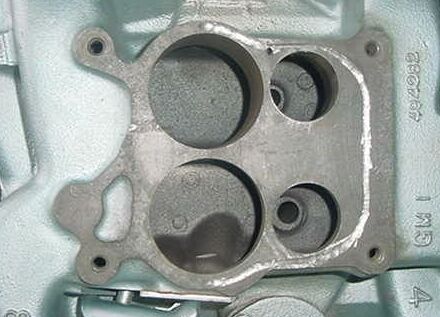
|
A small groove approximately 0.050" in width and depth was ground in the mating surface with a Dremel tool. The exact path is not critical, but must start and terminate at the centerline of the secondary throttle shaft. Also, the groove should be approximately midway between the throttle bore and side of the intake mating surface. The groove does not have to be perfect (this one is not), but must NOT break into the throttle bore or over the side.
|
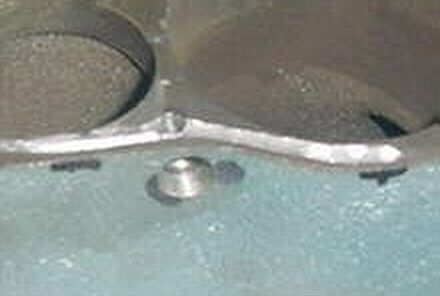
|
On the driver side (thickest material), a small (approximately 1/8") vertical hole is drilled down from the mating surface at the position shown between the primary and secondary throttle bores. A 7/16" hole (suitable for 1/4NPT) is drilled horizontally to intersect the verticle hole. Then tap this hole with 1/4NPT.
|
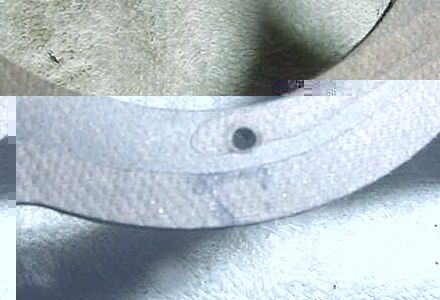
|
In the carb-to-intake gasket, drill four 1/16" holes at the external throttle shaft positions and intersecting with the groove. As shown in this example, these holes just need to intersect some part of the groove, as the air flow is small.
|
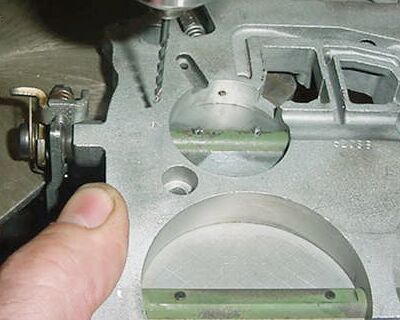
|
Using carb-to-intake gasket as a template, drill four 1/16" holes into the
carb throttle body, just deep enough to intersect the throttle shaft.
|
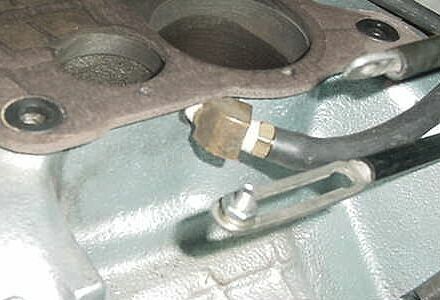
|
Install a 1/4NPT 45-deg to 1/4" fitting in the tapped hole. Attach 1/4" fuel line (it's stiffer than vacuum hose) as shown. Check that everything clears the throttle mechanism (it should).
|
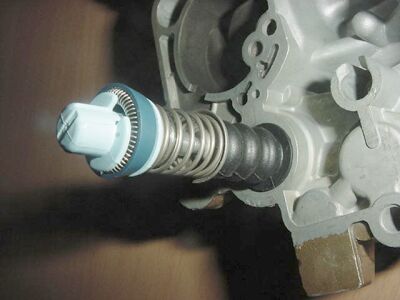
|
While the QJet is disassembled, install a rubber accel pump shaft seal upside down as shown. These rubber seals are usually included in standard carb overhaul kits. They usually are meant to be installed above the airhorn on the pump shaft to keep gas vapors from leaking out. In a blow-thru application, the fuel bowl is pressurized and gas will try to escape out the space between the shaft and its hole. This seal neatly prevents any leak.
The original H-O TurboFORCE package used an O-ring setup rather than the rubber seal. The seal is simpler, cheaper and just as effective.
|
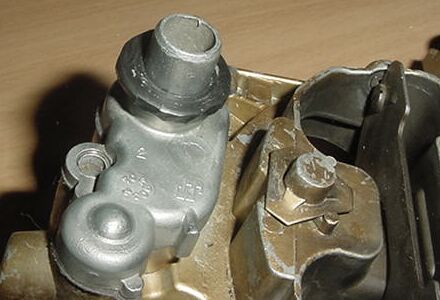
|
A common O-ring positioned as shown is required for any QJet with an external (to the air horn ring) fuel bowl vent. A pre-1975 style Pontiac bowl vent is shown. Chevy and most others have internal (to the air horn ring) bowl vents and do not require any seal (and no corresponding hole in the bonnet -- see below).
|
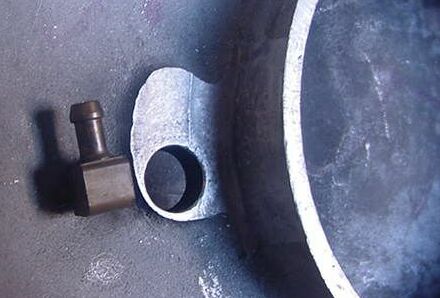
|
If there is an external fuel vent as shown above, then there must be a corresponding hole at the correct vertical spacing, clocking and radial position in the air pressure bonnet There are at least two variations (pre-1975 and later) for Pontiac QJets. The pre-1975 variety is shown. The 1/4" 90-deg hose fitting goes to the boost reference on the fuel pressure regulator and must be next to the fuel bowl vent, if so equipped.
|












